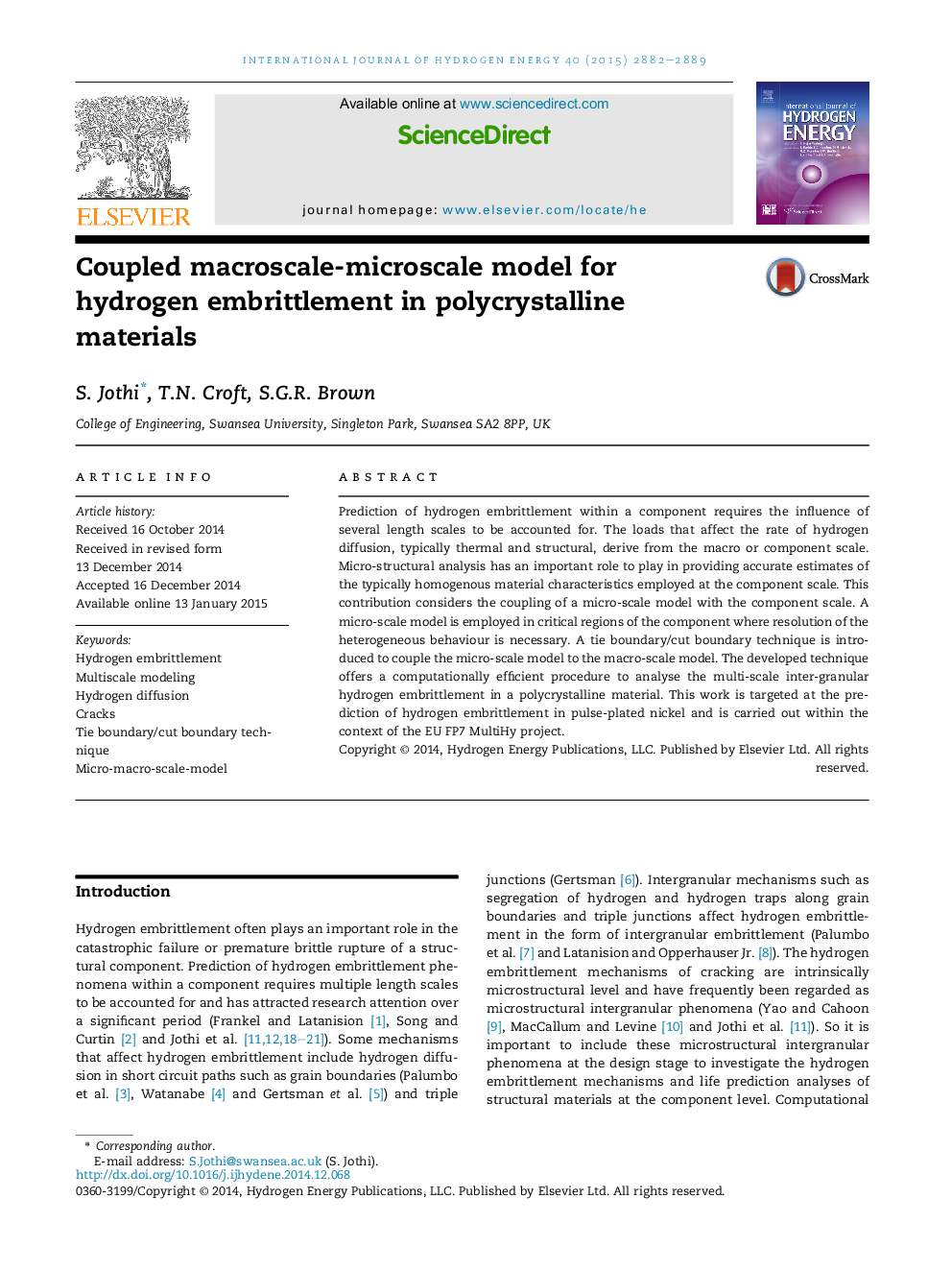| کد مقاله | کد نشریه | سال انتشار | مقاله انگلیسی | نسخه تمام متن |
|---|---|---|---|---|
| 1270052 | 1497467 | 2015 | 8 صفحه PDF | دانلود رایگان |
• Macroscale-microscale coupling techniques and software tools have been developed.
• To understand hydrogen embrittlement with in the structural components.
• The strengths of this technique are the usage of less computation resources.
• And decreases computational run time.
• Promising multi-scale tool that could be used in the design stage life predicting.
Prediction of hydrogen embrittlement within a component requires the influence of several length scales to be accounted for. The loads that affect the rate of hydrogen diffusion, typically thermal and structural, derive from the macro or component scale. Micro-structural analysis has an important role to play in providing accurate estimates of the typically homogenous material characteristics employed at the component scale. This contribution considers the coupling of a micro-scale model with the component scale. A micro-scale model is employed in critical regions of the component where resolution of the heterogeneous behaviour is necessary. A tie boundary/cut boundary technique is introduced to couple the micro-scale model to the macro-scale model. The developed technique offers a computationally efficient procedure to analyse the multi-scale inter-granular hydrogen embrittlement in a polycrystalline material. This work is targeted at the prediction of hydrogen embrittlement in pulse-plated nickel and is carried out within the context of the EU FP7 MultiHy project.
Journal: International Journal of Hydrogen Energy - Volume 40, Issue 6, 19 February 2015, Pages 2882–2889
